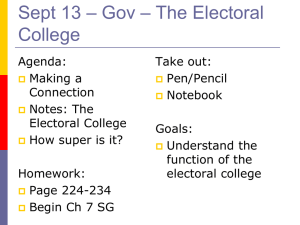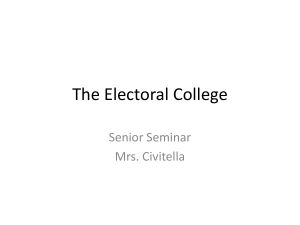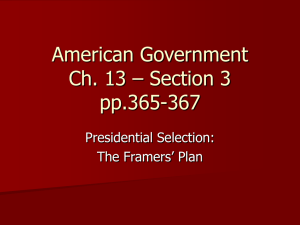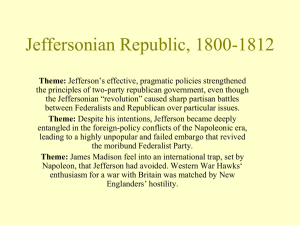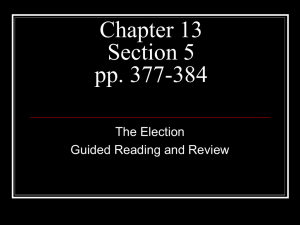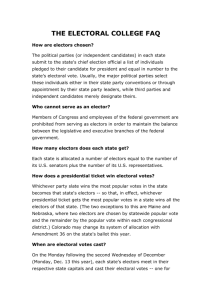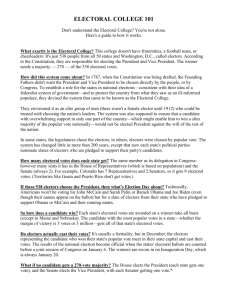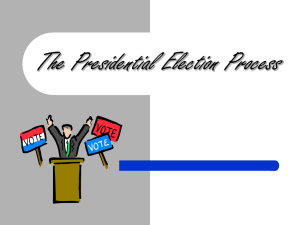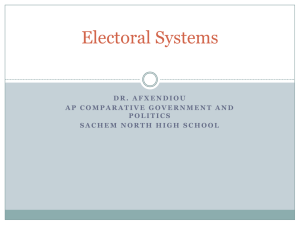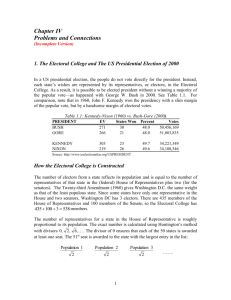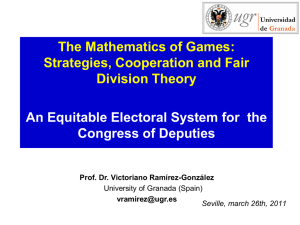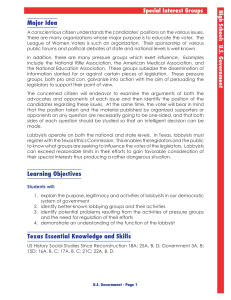The Electoral College
advertisement
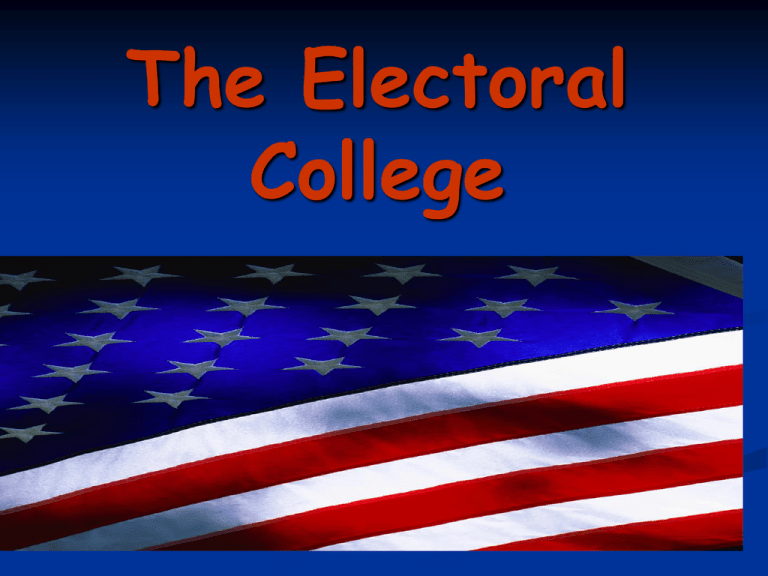
The Electoral College True or False? In a presidential election, the candidate with the most votes is elected president. Answer: Not necessarily. Ask Al Gore The 2000 Election The Popular Vote Al Gore George W. Bush 50,996,039 50,456,141 The Electoral Vote George W. Bush Al Gore 271 267 Historical Background The framers of the Constitution disagreed on how to elect a president—congressional selection or direct popular election. The electoral college was a compromise, combining features of both approaches How Does It Work? Each state is entitled to as many electoral votes as the sum of its representation in the U.S. House and Senate Texas: 32 House members plus 2 senators = 34 electoral votes Pennsylvania: 19 House members plus 2 senators= 21 electoral votes Total: 435 House members plus 100 senators plus 3 electors for the District of Columbia = 538 electoral votes Electors Individuals selected in each state to officially cast that state’s electoral votes. Framers anticipated that electors would be state leaders who would exercise good judgment. Today, party leaders select competing slates of electors who are typically longtime party activists. Electors almost always vote for their party’s candidates. Selection of Electors Each state determines the manner of selection All but two states use a winner-take-all statewide election system If Candidate A gets the most votes in a state, Candidate A gets the whole slate of electors. Voters and Electors A Texan who votes for Obama is really voting for a slate of electors pledged to cast the state’s electoral votes for Obama. In 2000, Bush won all of Florida’s 25 electoral votes because the final official vote tally showed him ahead of Gore by about 600 votes. The Real Election In December, the electors gather in their respective state capitols to cast ballots for president and vice president. In January, Congress convenes, opens the ballots received from each state, and announces the official outcome. What if no one candidate receives a majority? To win, a candidate needs a majority, that is, 270 electoral votes. If no candidate has a majority, the House selects the president from among the three presidential candidates with the most electoral votes. This last happened in 1824 when Congress chose John Quincy Adams. Popular Vote v. the Electoral Vote In a close race, the popular vote winner may not win the electoral college. Electoral vote winners who lost the popular vote: Bush over Gore in 2000 Benjamin Harrison over Grover Cleveland in 1888 Rutherford B. Hayes over Samuel Tilden in 1876 How does this affect elections? For a candidate to become president, he or she must win enough states to garner a majority of electoral votes. Presidential campaigns, therefore, focus on winning states, not on winning a national majority.


